Un, sea and sex! As Kim Jong Un reopens North Korea for tourists, the top ten things you can get up to in the hermit state - from brewery tours to sunning yourself at 'the Korean Benidorm'
- North Korea will open its borders to international tourists in December
North Korea will open its borders to international tourists in December - for the first time since the pandemic.
The communist regime was the first to seal itself in 2020 as a response to the Covid-19 outbreak.
Since the pandemic, North Korea has only welcomed a select group of visitors, such as travelling diplomats or the odd tour group from Russia.
Tourists wanting to visit the super secretive North Korea can only do so under a supervised tour, through which guides have complete control over visitors will see.
But with its borders officially opening to tourists this winter, here are the top ten things you can get up to!
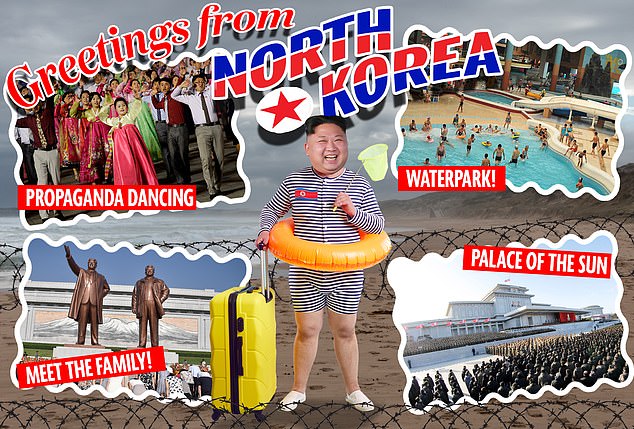
North Korea will open its borders to international tourists in December - for the first time since the pandemic
Pyongyang Metro
The Pyongyang Metro is considered to be one of the major highlights for many foreign visitors to North Korea, probably because it is one of the very few times tourists can see the city's residents going about their daily routines.
Buried 100 meters below the ground, the North Korean capital's subway system is considered to be one of the deepest in the world.
Built with the help of China and the Soviet Union in 1965, the neoclassical architectural style of the metro is similar to that of Moscow in Russia, or Kyiv in Ukraine, with its elaborate mosaics, gold chandeliers and gilded statues.
Like many other landmarks in North Korea, the metro pays homage to revolutionary feats during the liberation of Korea from the Japanese after World War II.
And while it is usually busy with commuters, the subway system also doubles as a nuclear bunker.
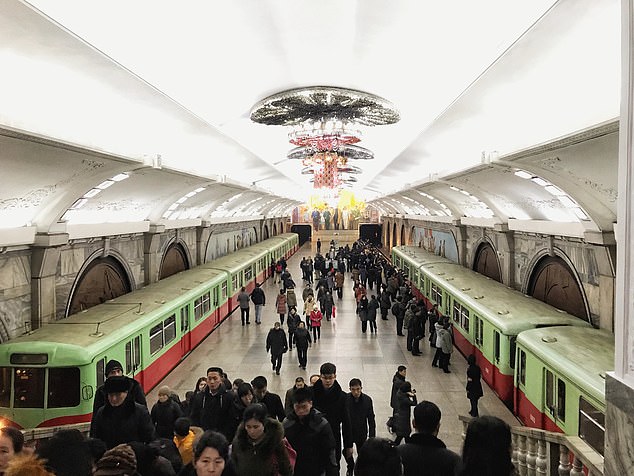
Inside of Pyongyang's neocolassical 100 feet deep metro system - that doubles up as a nuclear bunker
Wonsan-Kalma beach resort
North Korean leader Kim Jong Un has been building luxury hotels and recreational facilities in the Wonsan-Kalma zone to create a 'coastal wonderland' for tourists.
It has been the dictator's most talked about tourism project since plans for its development were announced in 2015.
Set to open in May next year, the Benidorm-style resort which sits on an immaculate white beach, is also located next to a rocket-testing site. What better way to relax?
It will be kitted out with water parks, hotels and an airfield.
Kim's inspiration came after his officials were left 'amazed' during a research trip to Spain's Costa Blanca in 2017.

North Korean leader Kim Jong Un (L) inspecting the construction project of the Wonsan Kalma coastal tourist area in North Korea's Gangwon Province
Munsu Water Park
Need to cool down? Visit Munsu Water Park in the heart of Pyongyang!
The 37-acre kitsch aquatic playground boasts indoor and outdoor pools, wave machines, lazy rivers, a range of slides, and a two story gym.
It also offers a bakery, coffee shop, fast food outlet, brewery and a hair salon providing 28 state-approved styles.
The cost of a four-hour visit to the park is just £7! But for the average North Korean living on an income of just £24 a week, this entertainment park is just for the the country's elite.
Nonetheless, tourists claim that a visit to the park is another way to talk to locals - something the authorities are usually wary of, and witness fascinating scenes of North Koreans enjoying themselves as they splash around the pools and slip down the water slides.

Inside Kim Jong-Un's water park where only North Korea's elite can afford to go for a swim... as just four hours of fun costs a third of the average weekly wage

The 37-acre kitsch aquatic playground boasts indoor and outdoor pools, wave machines, lazy rivers, a range of slides, and a two story gym
The park is not exempt from the hermit state's cult of personality, as visitors are expected to bow to a statue of former leader Kim Jong-il in the entrance.
North Korean propaganda boasts that the park was built 'to make sure that [the people] enjoy all the benefits of socialist civilization to their heart's content'.
But be warned: Tourists visiting the park are expected to be accompanied by their guides - even in the changing room!
Pyongyang claims the park welcomed 880,000 visitors in its first year – however recent reports suggest it had only 100,000 visits in the first half of 2016.
Join a mass dance
If you are visiting North Korea during a national holiday, you will almost certainly be witness to a spectacular mass dance on Pyongyang's main square.
The large and colorful choreographed dances are often performed by thousands of young North Koreans, usually students, dressed in traditional clothing, as revolutionary folk music plays.
The extravagant and highly coordinated displays are an instrument of propaganda for the nation to boast its power to international visitors.

North Koreans participate in a mass dance on Saturday, April 15, 2017, in Pyongyang, North Korea to celebrate the 105th birth anniversary of Kim Il Sung, the country's late founder and grandfather of current ruler Kim Jong Un

Citizens get ready for a mass dance in the capital's main ceremonial square, May 2016
Kumsusan Palace of the Sun
As the resting place of President Kim Il Sung and his son General Kim Jong Il, the Kumsusan Palace of the Sun is one of the most sacred sites in all of North Korea.
The two figures are the designated Eternal leaders of the nation.
Inside the grand building, Kim II Sung's embalmed body lies inside a clear glass scarcophagus.
His head rests on a traditional Korean buckwheat pillow and his body is covered by the flag of the Workers' Party.
Kim Jong II is also on display close to his father's remains.
Surrounded by gardens, the grounds of the palace are manicured with flowerbeds, water fountains and a moat with swans.
Foreign tourists are able to visit the palace on an official government tour, and photography inside the palace are strictly forbidden.
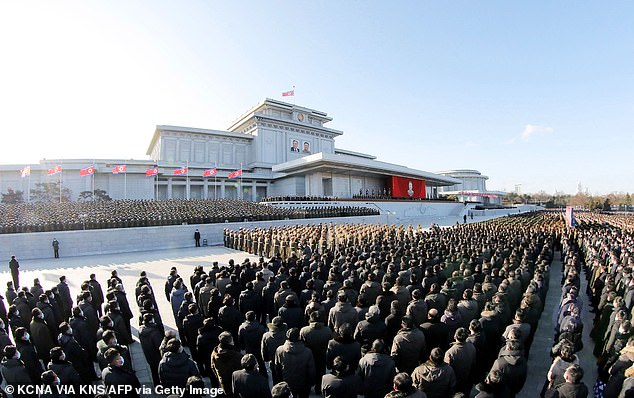
This picture taken on December 17, 2021 and released from North Korea's official Korean Central News Agency (KCNA) on December 18, 2021 shows a ceremony to mark the tenth anniversary of the death of Kim Jong Il, the father of current leader Kim Jong Un at the plaza of the Kumsusan Palace of the Sun in Pyongyang
Mansu Hill
With North Korea boasting the largest collection of statues in the world, tourists should expect to encounter hundreds of statues on their trip to the communist country.
But perhaps the most impressive are the statues at Mansu Hill in the capital, a collection of 229 monuments commemorating the history of the revolutionary struggle of the Korean people.
The central part of the monument consists of two bronze effigies of Kim Jong-Il and Kim Il-Sung.
Standing at 22 meters tall, the Great Leader overlooks the city of Pyongyang.
Taedonggang Brewing Company
Visitors are taken by surprise to find out that they can visit a British-inspired brewery in the North Korean capital.
The late Kim Jong Il, who decided that the nation needed a better state-run brewery, bought the British Ushers of Trowbridge Brewery in 2000 and shipped it piece by piece back to Pyongyang.
Visitors can tour the brewery and even have a taste of what is said to be surprisingly tasty beer.
Interestingly, the sale of the brewery could only go ahead after the British government received confirmation that the machinery could not be adapted to create chemical weapons.
Meanwhile, a delegation of North Koreans traveled to the UK for several months of training by brewer Gary Todd.

Inside the Taedonggang Brewing Company
Mangyongdae Funfair
Opened in the 1980s, the Mangyongdae Funfair in the North Korean capital is the largest amusement park in Pyongyang.
Despite a rusty merry-go-round and a rickety rollercoaster, the park is frequently attended by locals and enjoyed by foreign visitors, as they get the rare chance to ride on some of the park's attractions with North Koreans.
However, some visitors have reported that upon arrival, they are forced to wait on the bus while local residents are rounded up to make the park look livelier.
Juche Tower
At 170 meters, you can't miss the Juche Tower in the capital, which was built to honor Juche, the state ideology of North Korea.
Built to mark the 70th birthday of Kim Il Sung in 1982, the tower is made up of 25,500 granite blocks - one for every day of his life.
A trip to the top by lift is well worth it, as you can take in an impressive view of Pyongyang.
At the bottom of the tower stand 30 meter tall statues of three ideal North Korean workers holding a hammer, a sickle and a brush.
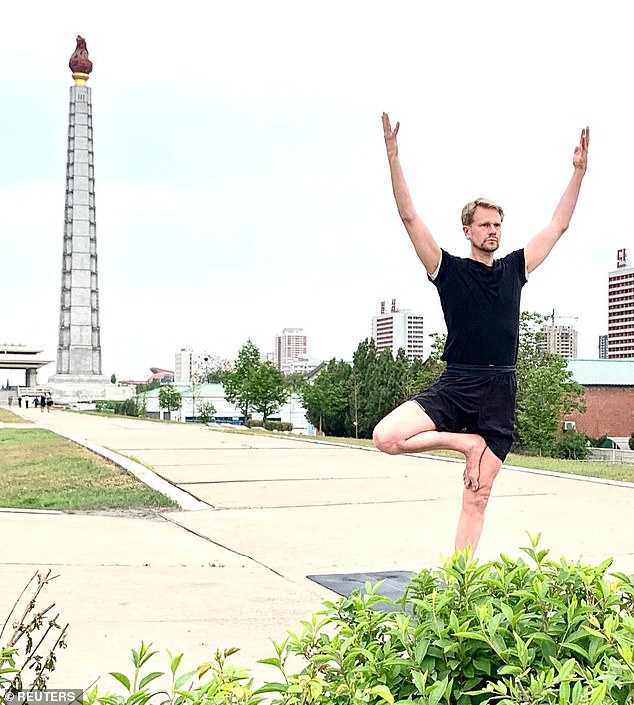
Swedish Ambassador Joachim Bergstrom practices yoga near the Juche Tower in Pyongyang, North Korea, June 21, 2020
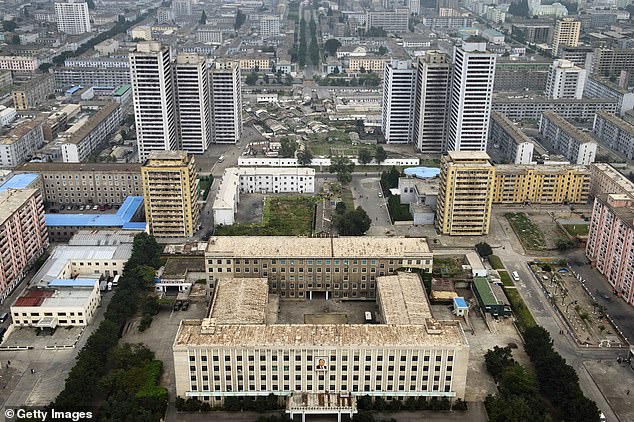
View of Pyongyang city from the Tower of the Juche Idea, a 170-meter tall monument
International Friendship Exhibition
Another bizarre and uniquely North Korean experience is a visit to the International Friendship Exhibition in Pyongyang Province.
Displaying a collection of all the gifts received by North Korea's previous leaders by dignitaries, tourists can see a range of items from breathtaking works of art to quirky paraphernalia from all over the world.
There is also a balcony with impressive views over the green North Korean mountains.
Monument to Party Founding
Statues of a hammer, a sickle and a paintbrush form the the Ideals of the North monument in North Korea.
Each tool is a symbol for the country's communist ideology, and honors workers, farmers and academics.
The 50 meter tall landmark reads 'Long Live the Workers' Party of Korea, the organizer and guide of all victories of the Korean people'. Inside the monument there are bronze engravings of North Korean figures.
While its visually not the most pleasing, the imposing monument gives tourists a sense of just how dominant North Korea's values are in society.

The Monument to Party Founding is a monument in Pyongyang, the capital of North Korea. The monument is rich in symbolism: the hammer, sickle and calligraphy brush symbolize the workers, farmers and intellectuals

















































































































































































































































































